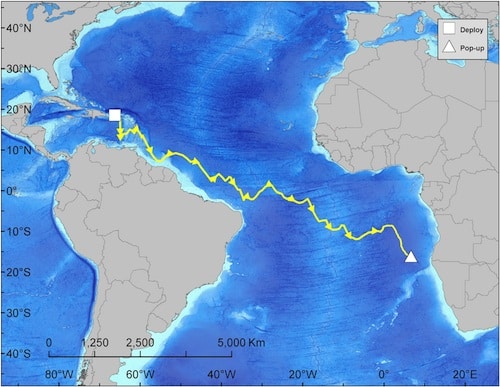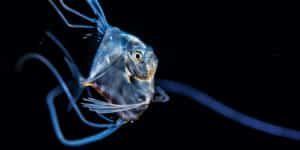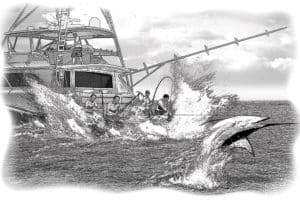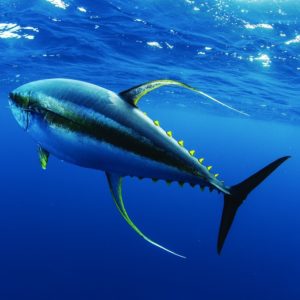
Great Marlin Race
I turned 40 this year, and one of the things I’ve come to realize is that time seems to fly by faster with each passing year. Case in point: We have nearly completed the first year of the IGFA Great Marlin Race (IGMR). For those who have not heard about this very cool endeavor, the IGMR is a partnership between Stanford University and the IGFA. Our collaborative goal is to deploy 50 satellite tags each year on marlin at various locations around the world. Most tags are deployed in and around billfish tournaments and other organized events that have both the right number of anglers and fish to deploy five to 10 tags at each event. To date, we’ve had tags deployed in Puerto Rico, South Africa and Australia, with more going out very soon in Hawaii, Portugal and the Canary Islands.
In the first year, we’ve already seen some amazing things. A blue marlin that was tagged off Puerto Rico traveled more than 4,776 miles in just 120 days, crossing into the southern hemisphere before the tag popped off near the coast of Namibia. Another blue marlin tagged off the coast of South Africa in the Indian Ocean made a beeline to the Cape of Good Hope and entered the Atlantic Ocean — a distance of more than 1,000 miles in just over six weeks.
But what’s the big deal about deploying a bunch of tags? First of all, this is citizen science at its best. That is, recreational anglers are directly participating in science by sponsoring the cost of the tag (no small feat at $4,000 per tag) and actually deploying it. I think this makes a hell of a statement as to how much recreational anglers value these fish. In turn, we (IGFA & Stanford) provide the information yielded from the tags to the anglers that sponsored tags and the general public through the IGMR website. In addition, tag sponsors get personalized reports on the behavior of their specific marlin during the time it was tagged. Most good anglers thirst for information about their favorite species, and the information reported on temperature preferences, depth and location are of great interest.
Putting expensive jewelry in marlin around the world is fine, well and good, but we have greater plans. The data yielded from these tags will not be proprietary to IGFA or Stanford, but will be available to scientists and managers around the world through an open-access, data-sharing system. There are a number of very talented billfish biologists and graduate students around the world who are working to learn more about marlin, and we hope that the data generated from the IGMR will contribute to this body of knowledge. In short, we hope to contribute to productive science.
Dr. William King Gregory, Curator of Fishes for the American Museum of Natural History and IGFA’s first president, had this to say about the subject in 1943:
“The motto of the IGFA, ‘For Ethical Sport and Productive Science,’ may well raise the question — what is productive science? Ichthyology, the science of fishes, does not limit itself to the task of identifying, naming, cataloguing and preserving samples of the thousands of species in the teeming world of fishes, however gigantic and thrilling that task may be. Nor would this science be complete even if all the desired data relating to food habits, time and space of breeding, migrations, etc., of all living species had been gathered and classified, card-catalogued, and micro-photographed and filed away in bomb-proof vaults. For all this is only the material for productive science. Ichthyology can only become productive when its material is being studied and analyzed in the quest for better and better answers to the enlarging problems of science as a whole. The anglers themselves, to whom we owe a great deal of important data, are a powerful aid in keeping the science of ichthyology from becoming a dead mass of statistics.”
I can’t help but think that Dr. Gregory, Mike Learner and IGFA’s other founding fathers would be proud of the work being done by all those who are involved in the IGFA Great Marlin Race.







